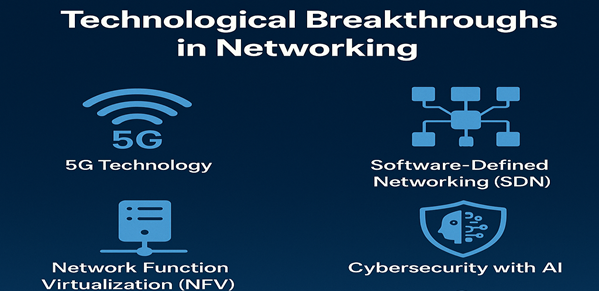Cyber Security News
TechBullion
3w
421

Image Credit: TechBullion
Amazing Advancements in Modern Technology in Networking
- The world is rapidly becoming digital with networking technology being a crucial component enabling advancements in internet, data sharing, communication, and security systems.
- Key advancements in modern networking technology include 5G, Wi-Fi 6/7, Software-Defined Networking (SDN), Network Function Virtualization (NFV), AI-powered cybersecurity, and the Internet of Things (IoT).
- 5G, the Fifth Generation Wireless Network, offers faster speeds, lower latency, and enhanced connectivity for various applications like smart cities and autonomous vehicles.
- Wi-Fi 6 and Wi-Fi 7 are improving home and commercial networking with faster speeds, better performance in crowded environments, lower latency, and enhanced security.
- SDN revolutionizes networking by separating control and data planes, allowing centralized management, automation, flexibility, and scalability.
- NFV utilizes software-based virtual services instead of expensive hardware, optimizing resources and reducing costs.
- AI is increasingly employed in network security to detect, analyze, and respond to threats in real-time, enhancing proactive defense and reducing human errors.
- IoT development relies on networking to connect millions of devices worldwide, enabling remote control and efficient communication.
- Cloud computing advancements have made networking smarter by providing more efficient and scalable solutions.
- These technological advancements in networking improve speed, efficiency, and pave the way for future innovations, emphasizing the importance of investing in networking for individuals, organizations, and countries.
Read Full Article
25 Likes
Eu-Startups
3w
211

Tadaweb secures €17.3 million to arm cybersecurity and defense teams with smarter OSINT
- Luxembourg-based Tadaweb secures €17.3 million to scale its Small Data Operating System for publicly available information (PAI) and open-source intelligence (OSINT), supporting product development and recruiting top talent.
- Arsenal Growth and Forgepoint Capital International lead the investment, with existing investor Wendel participating. Jason Rottenberg and Damien Henault will join the Tadaweb board.
- Tadaweb focuses on transparency, empowering analysts with a Small Data approach and combining technology with human intuition to reshape how organizations utilize digital information.
- Their SaaS platform aids defence, national security, and corporate security organizations across Europe and the U.S.
- OSINT, accounting for 80-90% of information-gathering activities for law enforcement agencies, involves collecting and analyzing publicly available data to support decision-making.
- Tadaweb helps organizations overcome information overload by providing rapid analysis of PAI to access accurate and actionable information in volatile markets.
- Tadaweb's technology augments analysts' Small Data skills with AI to integrate seamlessly with third-party tools, helping users meet crucial priorities like fraud reduction and threat identification.
- Investors are drawn to Tadaweb's Small Data approach, visual query engine, focus on human analysts, and committed management team.
- Tadaweb's funding now totals €34.7 million, with previous investments in 2023 and 2015.
Read Full Article
12 Likes
Dev
3w
412

Image Credit: Dev
Security - Solving the "Content Security Policy (CSP) Header Not Set": style-src
- The article discusses solving the "Content Security Policy (CSP) Header Not Set" issue related to the style-src directive.
- The article suggests inspecting the codebase for all style usages and adjusting the style-src value accordingly for a more secure implementation.
- It highlights different ways styles are applied in projects, such as inline styles and unsafe inline styles.
- A step-by-step guide is provided on setting the Content Security Policy (CSP) header to include specific directives and dynamically generating a nonce.
- The guide also mentions handling unsafe inline styles by setting the nonce attribute on the